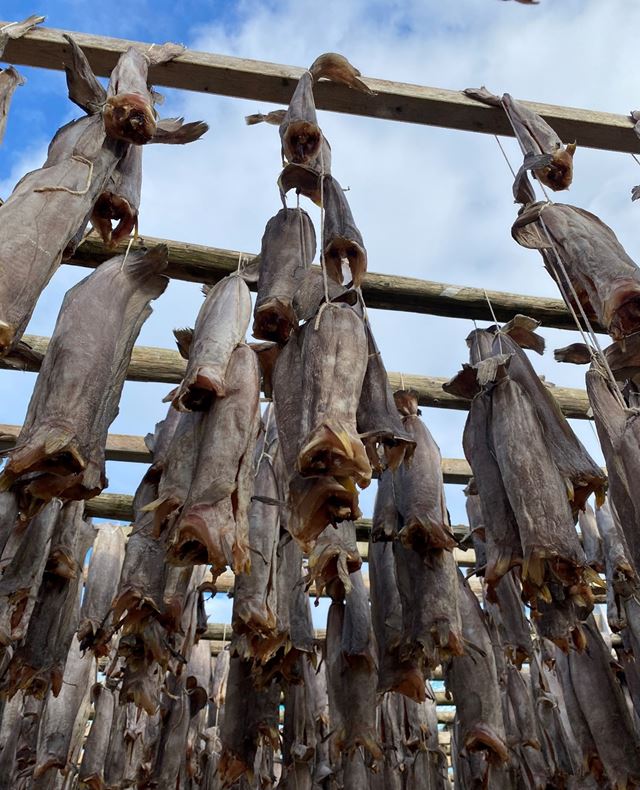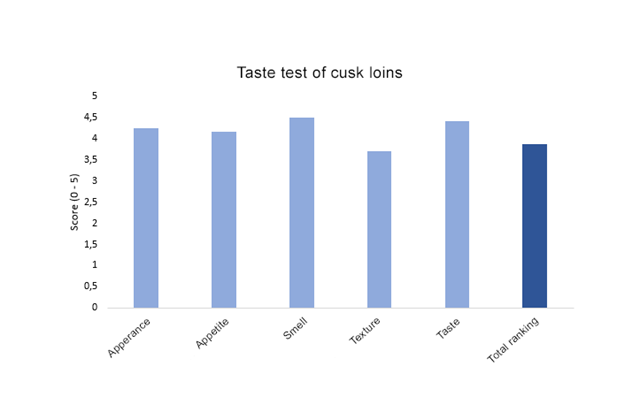Cusk is a cod-like, saltwater fish species that is encountered along the entire Norwegian coast. For the most part it is caught as unintentional bycatch when fishing for other species. In 2020, 93% of the cusk caught in Norway were bycatch from longline fishing, and the proportion of cusk being caught by Norwegian longline fisheries is continuing to increase.
As part of the project ‘Fersk linefanget brosme som råstoff til filetproduksjon’ (Fresh line-caught cusk as a raw material for fillet production), SINTEF is looking into the opportunities to offer consumers fresh or frozen cusk as a dinner option. Cusk is currently used mostly in the production of dried stockfish or salted fish, but indications are that cusk can be turned into high-value products. And there is no shortage of raw material.

Cusk is traditionally used for the production of dry stockfish and salted fish. A new project is looking into whether cusk can be offered to consumers as fillets. Photo: Solveig Uglem/SINTEF
Will there be consumer demand?
The project’s most important objective is to evaluate the potential for using fresh, line-caught cusk as a raw material for fillet production. However, in order to further refine and offer cusk as a new dinner option, we need to assess the potential market. We also need to know exactly how you and I feel about having a ‘new’ whitefish laid out on the fish counter.
Pleasant-smelling and appetising?
As part of the project, twelve people were invited to make up a tasting panel. Panellists were selected at random so as to be representative of standard consumers. Cusk loins were cut into portions and steamed until they were warmed through. Each panellist was then presented with his or her portion and asked to evaluate the fish according to a number of criteria. Scores were given for taste, smell, appearance and palatability, as well as an overall assessment, on a scale from 1 to 5, where 5 was the highest score. Panellists were also asked to describe what the fish tasted like.

Results from the cusk loin taste test. The pale blue columns show the results of assessments of individual criteria, while the dark blue column shows the overall ranking of the product.
In general, feedback from the taste panel was very positive. Smell achieved the highest score. All the panellists found the odour of the fish to be agreeable – fresh, pleasing and appetising. Taste also fared very well, and the panellists generally agreed that cusk had a mild and pleasant flavour. One panellist reported that the fish had a rather insipid flavour.
A mild flavour of fish – reminds me of shrimp (test panellist)
Is fried better than steamed?
The panellists said that the fish had a bright white colour and that the flesh was fine and firm, although others thought that the fillet was a little dense and compact. The panel gave flesh consistency the lowest scores. Many thought that the fish was a little tough to chew and that the fillet was somewhat dry. However, the majority were pleased with the firm, fine flesh and delicate consistency. The cusk was warmed through by steaming in a steam oven, and it is possible that it was steamed for too long, resulting in a negative effect on consistency. More sensitive steaming, or other methods of preparation such as frying, might be recommended with the aim of achieving firm consistency, but a fillet that is not too dry.
All in all, the panellists were very pleased with the product. Many of them had never tasted cusk before and were pleasantly surprised by a new, mild-flavoured whitefish. Many said that the cusk tasted better than cod, and all the panellists reported a very enjoyable total experience. Based on the responses from the taste test panellists, there can be no doubt that cusk has potential as an excellent dinner option.
It was GOOD! I’ve never tasted cusk before, and this was a positive experience (test panellist)
No flavour additives
The cusk was served with no seasoning or trimmings, and the panellists offered a number of suggestions as to how it might be prepared and for what kinds of dishes it might be best suited. Among these suggestions was that the fish would benefit from seasoning with a little salt and pepper. One panellist said that it was a good substitute for halibut. Other ideas for preparing cusk dishes included casseroles, gratins and fish cakes. Many of the panellists said specifically that they would like to see cusk fillets with tasty trimmings served as a main meal.
In these hectic times, many people are looking for inspiration when it comes to finding new dinner recipes. There are also many who both want, and ought, to be eating more fish. We believe that the time is right for a recipe book or brochure offering different ways of preparing cusk that make it both tasty and appetising. Such a book may be the ideal way of getting cusk onto the dinner plates of many more consumers. Cusk is a multi-purpose fish that is easy to like, and something that children will also enjoy. There is no shortage of possibilities, and perhaps you too will soon be enjoying a new dinner favourite?
The project (no. 901717) is being coordinated by SINTEF Ocean and funded by the Norwegian Fisheries and Aquaculture Industry Research Fund (FHF). You will find more information on the website https://www.fhf.no/prosjekter/prosjektbasen/901728/. The companies Gunnar Klo AS and Fresh PL AS are SINTEF’s research partners in this project.


